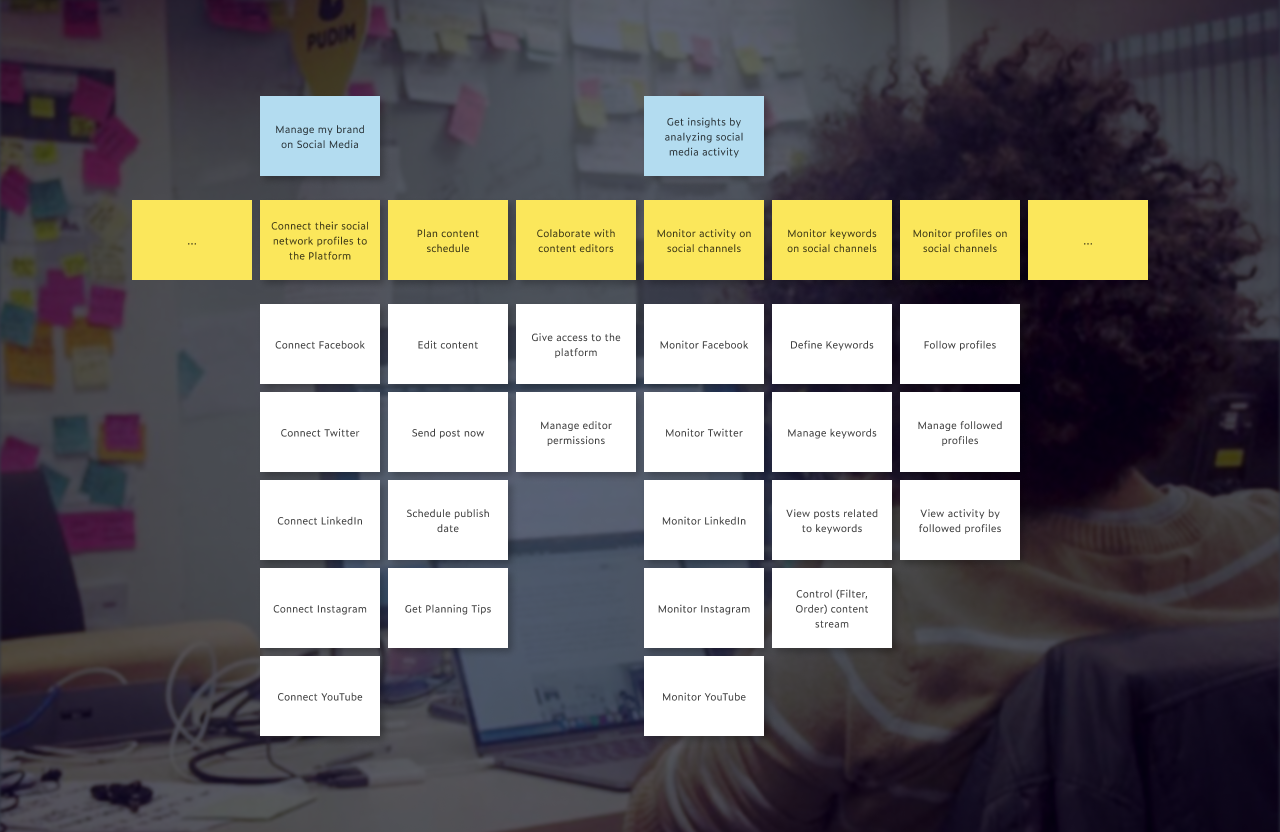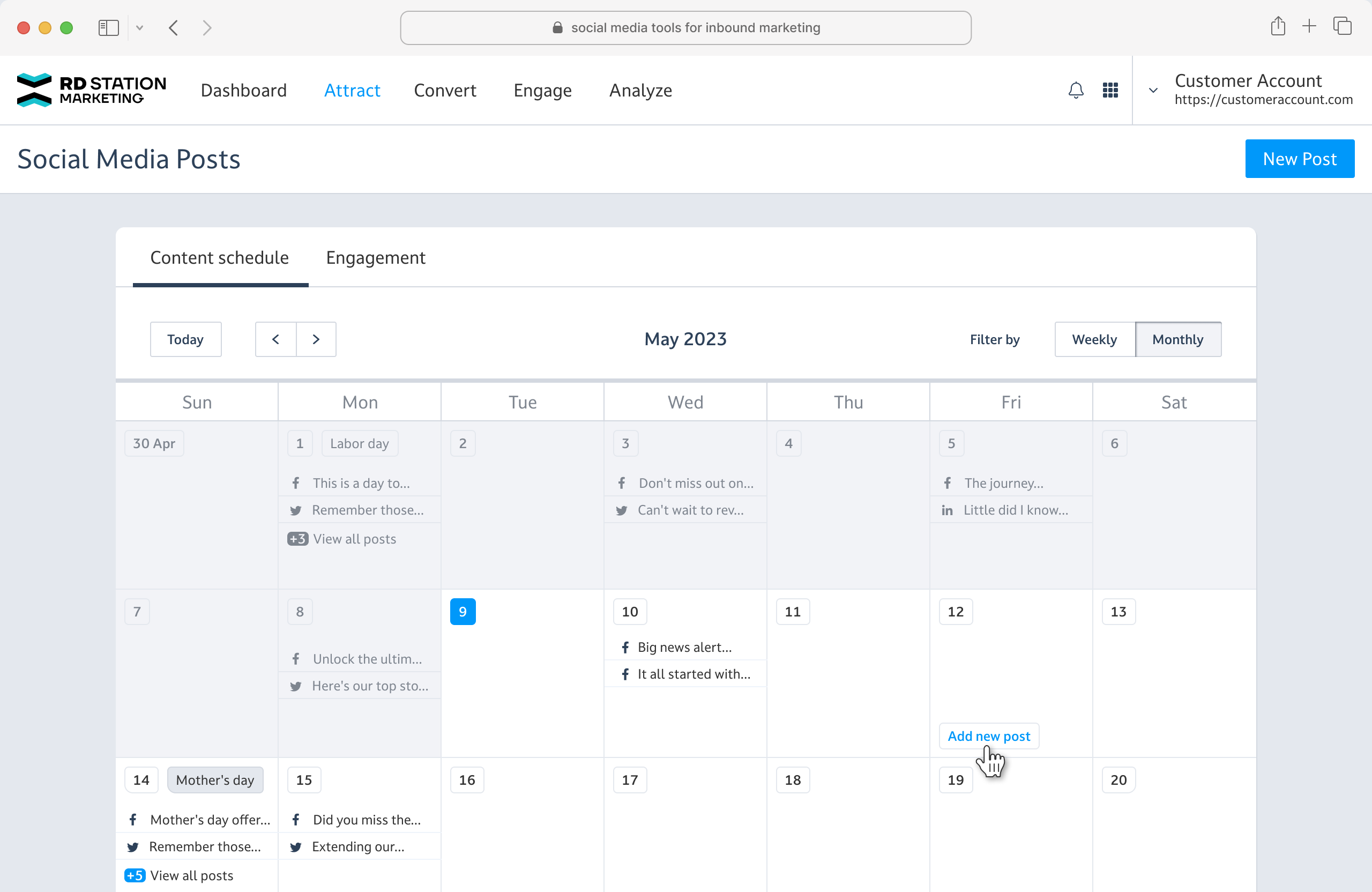Social Media Tools for Inbound Marketing
As a product designer at a B2B Inbound Marketing Platform Startup, I was an integral part of a dedicated product team aiming to enhance our offerings and increase customer success in attracting new traffic and leads through social media tactics. Throughout this case story, I will share my insights and experiences as we iterated our way to success.
Our Starting Point
In the fifth year of the startup's journey, business were gaining momentum. However, our social media tools were not performing well. Less than 10 percent of our customers were using them effectively. We knew we needed to make improvements to increase engagement. So, we embarked on a mission to enhance our social media tools and provide a better experience for our users.
Unveiling Business and User Insights
I worked closely with a great Product Manager, who brought invaluable subject matter expertise, product research, and a holistic business perspective. Collaborating hand in hand, we delved into product data. Personaly I made primary research a top priority and succesfully connected with users through calls and in person interviews.
As we searched for the best approach to organize and synthesize user needs, I discovered the power of user story mapping. This approach became our go-to method, enabling us to create shared knowledge and maintain a strong alignment between our solution and the user's journey.

Improving the current feature
Our initial focus was on refining the Social Media Post Editor to address unexpected surprises users encountered when viewing their published content. By introducing a post preview feature and implementing other usability enhancements, we transformed the tool into a powerful asset that allowed users to effortlessly create captivating posts across various social media platforms.

We proceeded with the development of a Social Media Calendar, an intuitive tool that streamlined the planning and scheduling of social media content, ensuring our users maintain a consistent online presence. Additionally, we provided content suggestions, highlighting significant Brazilian holidays and professional commemorative dates.

Unlocking the Potential of Lead Generation
Recognizing that lead generation was the core value proposition of our platform, we developed a feature that enabled users to track leads originating from links shared on social channels. By measuring the direct impact of social media tactics on lead generation, we provided unique value and solidified the alignment between our social media tools and the platform's primary objective.

Venturing into the Social Paid Channel
As our product evolved, we saw an opportunity to explore new offerings and expand into the realm of Paid Media. This presented us with unique challenges and exciting possibilities. As usual, our target audience demanded user-friendly tools that required minimal training.
We probed the problem space by integrating Facebook Lead Ads seamlessly, instantly populating our users' lead databases with leads generated through this powerful feature. The success we observed within the cohort of users who activated the new integration surpassed other conversion methods, validating the value of paid media integration.
Building upon this momentum, we introduced the Facebook Ads Editor, simplifying the creation and publishing process of Facebook ads. This simple and powerful tool empowered SMB Digital Marketers to effortlessly reach custom audiences and optimize their ad campaigns for maximum impact.
Achieving Results through Iterative Development
It was definitely not a linear story we had our moments of chaos as we explored different solutions. Embracing the principles of Kanban Software Development, we continually evolved our work processes. Balancing priorities and considering the broader perspective, we made tough decisions and let go of ideas that didn't align with our objectives.
With this experience I learned that an flexible and iterative approach leverages outcomes. I witnessed that adoption and retention rates of our social media features experienced a significant boost, with overall adoption going from approximately 8 to 30 percent of our platform's customer base.